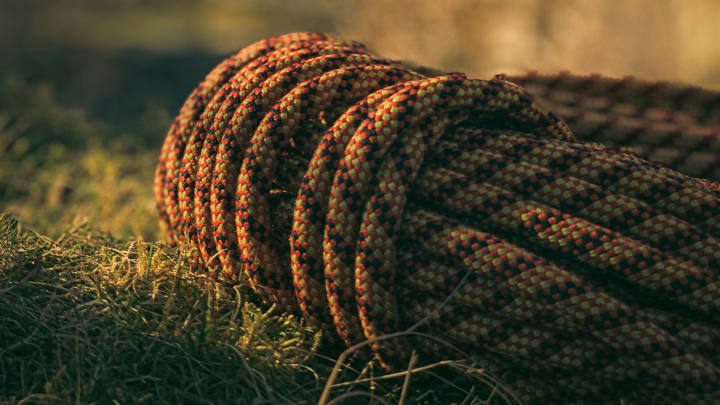Choosing Your First Climbing Rope

Brands
There are plenty of climbing brands to choose from when purchasing your rope. The leading companies for reputable ropes include Black Diamond, Mammut, Edelrid, Petzl, Sterling, Beal and Maxim. At various times throughout the year, you can often find great deals on new ropes.
Dynamic or Static?
Dynamic ropes and static ropes are both used in the climbing world but for different purposes. Dynamic ropes are the ropes that you tie into and climb with. They are designed to stretch which helps absorb impact. A static rope does not stretch and is ideal for rope rescues or anchoring in a toprope setting. Think of a dynamic rope as a trampoline and the static rope as the ground. If you were to jump off a roof, you would rather land on a trampoline than the ground as the trampoline will absorb impact.
Single, Half, or Twin?
These terms refer to the type of dynamic rope you will be climbing with. Single ropes are the most commonly used among climbers. This is the rope you've likely seen people climbing with often and involves using a single strand of rope. Half ropes are thinner and tend to be preferred by alpinists and mountaineers. With a half-rope system, you will be climbing with two ropes. A twin rope, similar to a half rope, also involves climbing with two ropes. However, the twin system requires the climber to clip both ropes into each piece of protection, resulting in a twin-like, or identical, system. As a novice rock climber, the single rope system is the way to go, but it is important to be familiar with the half and twin systems, too. Single ropes are versatile and user-friendly, making it a good system to learn on.
Length and Diameter
The overall size of your climbing rope is dependent on where you will be climbing and the type of climbing you will be doing. When buying your first rope for a standard toprope, a reliable length is 60m long with a diameter of 10mm. This choice will allow you to climb on various routes. Remember, a full-length 60m rope is only 30m when set up as a toprope. If you wish to climb taller routes, opt for a longer rope.
Dry Ropes
When starting your climbing journey, you will need to decide whether or not you should purchase a dry-treated rope. If you are going to be rock climbing in fair weather, a non-dry rope will serve you well. However, if you plan to ice climb or climb in any conditions where your rope will get wet, select a dry-treated rope. A non-dry rope, when wet, reduces the overall strength of the rope by at least 30 percent. A dry-treated rope is water-resistant due to the rope’s coating. The amount of coating determines the level of water absorption. To note, dry-treated ropes are far more expensive than non-dry ropes. While the investment is well worth it for wet conditions, it is unlikely that you will need a dry-treated rope for your standard rock climb.
Final Notes
Ultimately, your rope choice is determined by what you're climbing and how you’re climbing. Be mindful of the way in which you store your ropes and regularly check your rope for fraying and soft spots.
